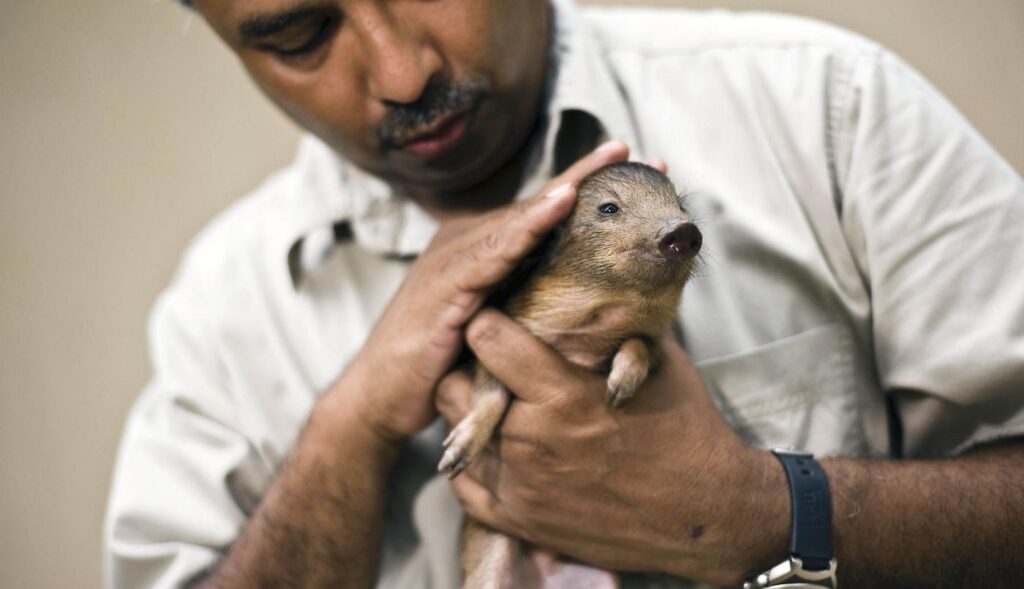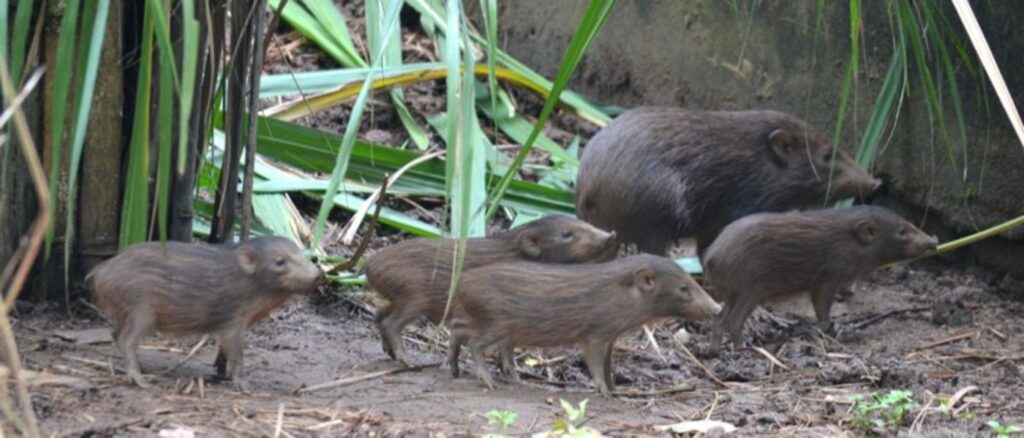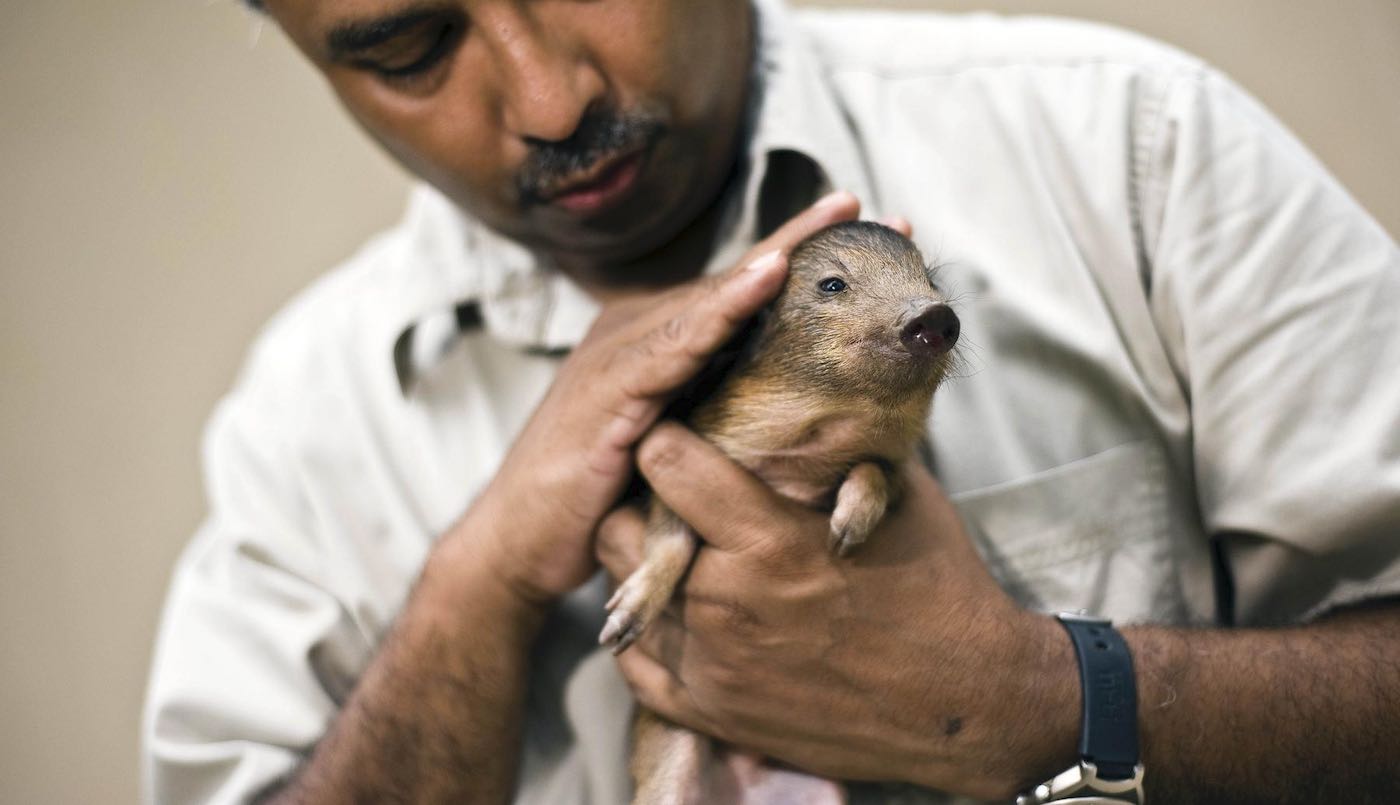
Who would imagine that in the habitat of elephants, tigers, and rhinos, the world’s smallest wild hog is the animal that’s determining where the conservation dollars go?
Like the keystone in an arch that holds all the others in place, the endangered pygmy hog of North India is the keystone species of the Terai grasslands, and while those other large mammals can live elsewhere, the hog cannot. Therefore you have a situation where protecting a 10-inch tall pig has the added benefit of protecting the 300-pound tigers and 8-ton elephants.
Presumed extinct until it was discovered in 1971 in the Indian state of Assam by a tea plantation worker, it wasn’t until the 1990s that conservationists began breeding the pygmy hogs in captivity.
Fortunately the hogs, which represent the last living species in the genus porcula, breed like, well, pigs, and now between 300-400 are roaming the Terai grasslands again—while another 74 stay in captivity awaiting reintroduction.
This is all down to the work of the Pygmy Hog Conservation Program, (PHCP) established in the ’90s by Gerald Durrell of the Durrell Wildlife Conservation Trust.

Between 2008-2020, National Geographic reports, the PHCP released 130 wild hogs into two national parks, Manas and Orang, as well as two wildlife sanctuaries, Barnadi and Sonai Rupai. All four of these are found in the state of Assam, as that’s where the special grassland habitat the pygmy hogs require can be found.
MORE: ‘Huge Surprise’ as Giant River Otter Thought to be Extinct Pops Up in River in Argentina
Grassland ecosystems often contain one or more species that act as regulators or engineers which keep the system healthy. Lemmings or other rodents constantly aerate the soil through the digging, while grazers like bison or wildebeest constantly trim the tall grass species, allowing light to reach the smaller blades.
Pygmy hogs play a role like this in the Terai grasslands. They tear up grasses to make small thatched nests over depressions in the ground, and the trails and corridors they make among the grass stalks help create space for light and for other plant species to grow, not to mention useful ready-made highways for other animals.
If the Terai grasslands can be protected from grazing animals and fires, there’s no doubt the hog will become a common sight once again.
(WATCH the Smithsonian video about pygmy hogs below.)
SHARE the Good News From India With Your Pals…




















